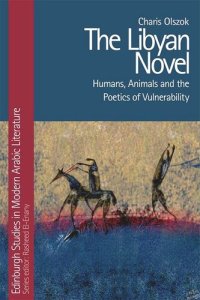
Ebook: The Libyan Novel: Humans, Animals and the Poetics of Vulnerability
Author: Charis Olszok
- Year: 2022
- Publisher: Edinburgh University Press
- Language: English
- pdf
Traces the developments in Libyan novel writing from the 1970s to 2011 through encounters between human, animal and land
- Locates the study of internationally renowned authors Ibrahim al-Kuni (b. 1948) and Hisham Matar (b. 1970) within the context of their Libyan compatriots
- Analyses works by al-Sadiq al-Nayhum and Ahmad Ibrahim al-Faqih, previously neglected in English-language scholarship
- Adds nuance to the understanding of animals as straightforward political allegory, and brings a non-western, Islamic perspective to the study of the ‘creaturely’
- Tackles postcolonial themes from the little-studied case of Italy and Libya
- Suggests new approaches to postmodernism within a politically and economically isolated country
Analysing prominent novelists such as Ibrahim al-Kuni and Hisham Matar, alongside lesser-known and emerging voices, this book introduces the themes and genres of the Libyan novel during the al-Qadhafi era. Exploring latent political protest and environmental lament in the writing of novelists in exile and in the Jamahiriyya, Charis Olszok focuses on the prominence of encounters between humans, animals and the land, the poetics of vulnerability that emerge from them, and the vision of humans as creatures (makhlūqāt) in which they are framed.
As Libya transforms into a dictatorial, rentier state, animals represent multi-layered allegories for human suffering, while also becoming focal points for empathy and ethics in their own right. Within reflections on Italian colonisation and ensuing forms of political and social oppression, concomitant with oil, urbanisation, exile and war, staged in remote deserts, isolated coastlines and neglected city parks, The Libyan Novel examines how physical, emotional and intellectual hardship prompts empathetic gazes across species lines. Through engagement with the folkloric and Sufi traditions that define the country’s past and shape its modern fiction, it further traces the spiritually, environmentally and politically holistic imaginings that contest a precarious reality.